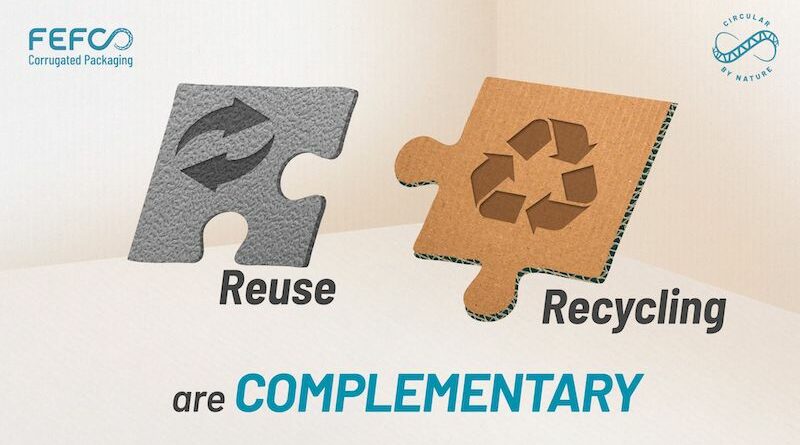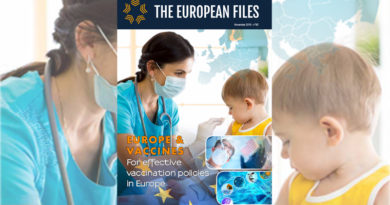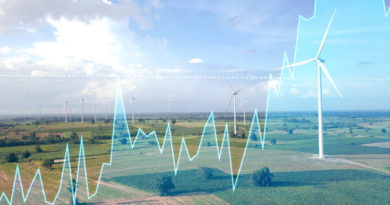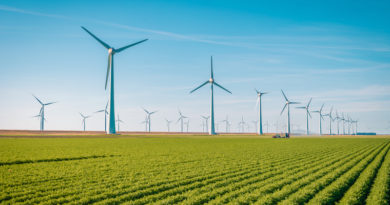
Bringing science to the packaging debate
The EU Green Deal and the Circular Economy have taken a leading role in the European Union’s agenda. Given the evident impact of climate change and the ongoing energy crisis, measures related to these initiatives are vital.
When discussing waste generation and management, a strong focus has been placed on the recyclability and reusability of packaging. At European level, the debate on packaging is set to take the centre stage with the Commission’s upcoming review of the Packaging and Packaging Waste Directive, expected to be published on November 30. The revision provides the EU with an opportunity to support the transition to a circular and climate neutral European economy. This is only feasible if the Commission delivers a sensible, realistic and fact-driven approach.
The European Federation of Corrugated Board Manufacturers (FEFCO) represents the interests of the corrugated cardboard industry, whose products are inherently circular. The industry is committed to supporting Green Deal ambitions.
With an average of 88% recycled content for corrugated cardboard and a recycling rate for paper & board of 83% (Eurostat 2018), the industry holds the packaging sector’s highest recycling figures. This is thanks to well-functioning and effective recycling system in place and the high demand for recycled paper as a secondary raw material.
In 2022, FEFCO released three studies aiming to better understand the environmental impact of certain packaging solutions and to provide scientific evidence to support the policy discussion. The studies include a peer-reviewed comparative life-cycle assessment (LCA) of reusable and recyclable packaging solutions for the food segment, performed by Ramboll; a hot-spot analysis of the e-commerce logistics chain, performed by Ramboll; and a white paper providing a critical view on packaging recycling and reuse in the European Circular Economy, performed by VTT Finland.
The peer-reviewed comparative LCA demonstrated that recyclable corrugated cardboard packaging outperforms reusable plastic crates in 10 out of 15 environmental impact categories, including climate change, resource use (fossils), water use, and many others.
The study also found that reusable plastic crates should be used at least 63 times to be more environmentally friendly than corrugated cardboard – which implies continuous use for over 10 years. This number is unrealistically high given that the baseline scenario considered by the LCA, based on the best available scientific data, estimates an average return rate of 24 times for reusable plastic crates. Additionally, since reusable packaging can be subject to breakages and losses, it is questionable whether the required number of rotations to be beneficial for the environment can be achieved.
The second study performed, the hot-spot analysis, confirms the importance of the number of rotation when considering the impact of reusable packaging. The ‘real number of uses’ was identified as the number one ‘hot-spot’. This life cycle stage accounts for a significant proportion of the environmental impact of the packaging within the supply chain. The ‘real number’ proves difficult to ascertain since official data is largely unavailable.
Essentially, achieving the highest possible number of rotations is the key factor for reusable packaging to reduce its impact on the environment, and the knowledge gained from the LCA confirms that, in the case of reusable plastic crates, the rotations needed are unrealistically high.
A second ‘hot-spot’ has to do with logistics parameters associated with reuse, such as storage and the transport distance. The complexity of e-commerce supply chains is not yet fully understood, meaning that their potential environmental impact is often higher than anticipated. Evidence from ongoing trials indicates that reusable packaging in e-commerce does not provide the necessary economic or environmental returns to be considered a valuable alternative.
Regarding the actual transition to reuse, the White Paper reaffirms that changes to reuse systems involve substantial economic investments and create new costs related to return logistics, transport, washing, sorting, repair, etc.
Although reusable packaging could bring value in certain applications, a complete shift to reuse could compromise current well-functioning recycling systems. If policymakers intend on favouring the most sustainable option, products need to be evaluated across their life cycle on a case-by-case basis.
There is a great concern that the upcoming review of the PPWD will include particularly high targets for the reuse of packaging, indiscriminately affecting different packaging materials.
EU legislation should consider recycling and reuse as complementary measures and not prioritise one over the other. An exponential shift to reuse could have unintended consequences that must be accounted for by the legislator before specific targets are set.
Besides the possible worsening of packaging’s environmental impact outlined in the FEFCO studies, reuse systems also risk increasing food waste due to contamination in the logistic chain or inadequate cleaning of reusable packaging.
Hygiene and safety concerns for consumers and producers must also be considered when reusing packaging in food contact applications.
Additionally, high reuse targets could have significant implications for the intercontinental transportation of goods and create unnecessary trade disputes with third countries that cannot guarantee the implementation of reuse systems.
Another possible consequence of reuse for the supply chain is an increase in packaging standardisation, which could prevent innovation, lead to overpackaging and increase the use of filling materials for product protection. Products require a diverse range of packaging in all shapes and sizes that would lead to a huge increase in the amount of packaging placed on the market and packaging waste overall.
Finally, reuse measures rely heavily on consumers to contribute to the functioning of reuse systems, especially in the case of e-commerce. The Commission should not under-estimate the important role of citizens to return packaging in good condition to the right place for reuse.
FEFCO believes that packaging circularity objectives should be aligned with the Commission’s climate neutrality ambitions. Therefore, FEFCO initiated a roadmap establishing the corrugated cardboard industry’s strategy and pathway to reaching climate neutrality by 2050. This thorough piece of work shows the intention to decarbonise the sector and demonstrates the industry’s full alignment with the Green Deal objectives.
Corrugated cardboard packaging is fit for the future and circular by nature.




